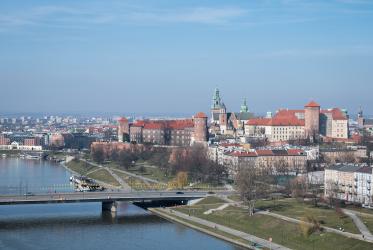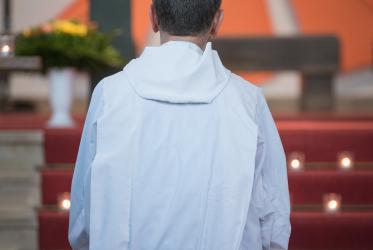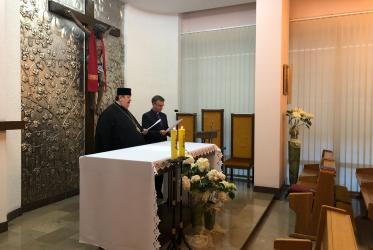Église orthodoxe autocéphale de Pologne
(Polski Autokefaliczny Kościół Prawosławny)
The ancient Slavonic population of the area covered by modern Poland became Christian over a thousand years ago. The first Orthodox diocese was established in the 10th century. The Polish court gradually came under the sway of Rome, and Orthodoxy was increasingly repressed. The 1596 Union of Brest, for which the Jesuits were mainly responsible, provoked determined resistance from the majority of the nobility in the east of what was then Poland, which limited the spread of the Uniate Church of the Eastern Rite. New monasteries arose and Orthodox brotherhoods were established to defend the indigenous faith. When their churches were commandeered by Uniate priests, the faithful often assembled in unconsecrated buildings to share in the celebration of the Orthodox liturgy. When the country was divided in the second part of the 18th century, the eastern half of Poland became part of Russia and consequently the Orthodox population came under the jurisdiction of the Russian Orthodox Church. In 1918 an independent Polish state came into being once more and the metropolitan of the Polish Orthodox Church endeavoured to secure autocephalous status for the church. This was achieved in 1924 through the Ecumenical Patriarchate; autocephaly was proclaimed officially in Poland in 1925 and was recognized by the Russian Orthodox Church in 1948.
The period between the two world wars was accompanied by a number of difficulties for the Orthodox population. With the consent of the Polish state authorities, the Roman Catholic Church seized part of the properties belonging to the Orthodox Church. When the eastern border of the country was altered after the second world war, a large tract of the country with its Orthodox population became Soviet territory and came once again under the Russian Orthodox Church. Consequently the number of the Orthodox in the People's Republic of Poland shrank from 5-6 million to less than half a million. After the democratic changes in the country in 1991 a special law on the relations between the state and the Polish Autocephalous Orthodox Church was passed. It guarantees equal rights for the church and makes it possible to establish work in the army and to recover church properties. Relations with the Roman Catholic Church in Poland remain tense, despite the new ecumenical climate.
The Holy Sobor (council), consisting of all the bishops (currently eight), under the presidency of the metropolitan, is the highest authority. The metropolitan council is the advisory board made up of representatives of the clergy and the laity, from whom the presidium is elected. Priests are trained at the theological seminary and the Christian theological academy in Warsaw, which has an Orthodox section offering a five-year course. There is also a department of Orthodox theology at the University in Bialystok that does scientific work only. Special Orthodox religious courses are also offered by the school of Orthodox iconography in Bielsk Podlaski and the school of Orthodox singing in Hajnowka. Work with youth and children is conducted by the Fellowship of Orthodox Youth in Poland (founded in 1980) and charity by the charitable centre "Eleos" (Mercy) (founded in 1996).
There are five monasteries and three convents in the Polish Autocephalous Orthodox Church, with a total of about 80 monks and nuns. The best known are: the Annunciation Monastery in Suprasl (founded at the end of 14th century, located in the Bialystok region), the Monastery of St Onufry in Jableczna (founded in the 15th century, located in the Biala Podaska region) and the Convent of St Martha and Maria in Grabarka (founded in 1947, in the Bialystok region).




